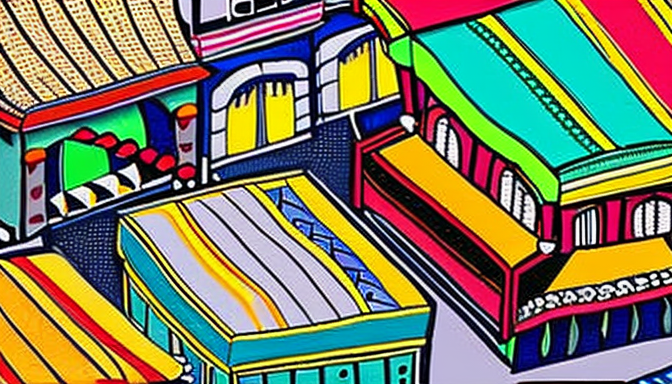Karachi is a city that breathes stories. Its vibrant oral traditions are not just a means of entertainment; they are the lifeblood of its cultural identity. Imagine sitting around a fire, listening to elders share tales of the city’s past. These stories are more than just words; they are memories that connect generations. They capture the essence of what it means to live in Karachi.
Listening to stories and interviews from those who witnessed Karachi’s past first-hand is like opening a treasure chest of memories. Each tale is a thread woven into the rich tapestry of the city’s history. From the bustling markets to the serene beaches, every corner of Karachi has a story waiting to be told. These narratives not only entertain but also educate us about the struggles and triumphs of its people.
In Karachi, storytelling serves several important roles:
- Preservation of Culture: Through storytelling, traditions and values are passed down.
- Community Connection: Stories foster a sense of belonging among diverse populations.
- Historical Insight: They provide a glimpse into the lives of those who came before us.
As we delve into these oral traditions, we uncover a world rich with experiences and emotions. Each story is a reminder of our shared humanity. So, next time you hear a tale from Karachi’s past, take a moment to listen. You might just find a piece of your own story within it.
The Role of Storytelling in Karachi’s Culture
Storytelling in Karachi is not just a pastime; it’s a lifeline to the past. Imagine sitting around a fire, the night air thick with anticipation. The flicker of flames dances on faces, and the air buzzes with tales waiting to be told. These stories aren’t mere entertainment; they are the very fabric of Karachi’s identity.
In this bustling metropolis, diverse communities come together through shared narratives. Each story reflects the values, beliefs, and experiences of its people. Listening to these tales is like opening a window to the soul of the city. They reveal the struggles, triumphs, and dreams of generations. Have you ever wondered how a simple story can connect people from different backgrounds? It’s magic, really!
Oral traditions help preserve local history and culture. They keep the memories alive—stories of resilience, love, and loss. Many elders in Karachi have witnessed firsthand the city’s transformations. Their anecdotes are treasures, capturing moments that textbooks often overlook. For instance, a grandmother’s tale of her childhood in a now-bustling neighborhood can transport you back in time. It’s not just history; it’s a living legacy.
As we listen to these stories, we create bonds. We understand each other better. It’s a reminder that despite our differences, we share a common thread. So, the next time you hear a story, take a moment to appreciate its depth. It’s not just a tale; it’s a piece of Karachi’s heart.

Folklore and Legends: A Tapestry of Karachi’s Past
Karachi’s folklore is a vibrant tapestry woven from the threads of its rich history and diverse cultures. Each story carries the weight of generations, echoing the voices of those who came before us. Imagine sitting around a fire, listening to an elder recount tales of bravery and resilience. These stories are not just entertainment; they are windows into the soul of the city.
From the bustling streets of Saddar to the serene shores of Clifton, every corner of Karachi has its own legend. Have you heard about the ghost of the Quaid-e-Azam’s mausoleum? Or the tales of fishermen who claim to have seen mermaids off the coast? These narratives are steeped in local beliefs and customs, helping to shape the identity of the people.
Listening to these stories is like holding a treasure map. Each tale reveals a piece of Karachi’s past, from its struggles to its triumphs. They remind us of the strength and unity of the community, especially during challenging times. As we gather to share these legends, we create bonds that transcend age and background.
In Karachi, folklore serves as a bridge connecting the past to the present. It’s crucial to capture these memories and legacies through interviews and storytelling sessions. This not only preserves our cultural heritage but also enriches our understanding of who we are. So, next time you hear a story, remember: it’s not just a tale; it’s a piece of our collective memory.
Frequently Asked Questions
- What is the significance of storytelling in Karachi?
Storytelling in Karachi is more than just entertainment; it’s a way to connect communities and preserve cultural identity. It captures the essence of the city’s diverse experiences and values, making it a vital part of everyday life.
- How does folklore reflect Karachi’s history?
Folklore serves as a tapestry that weaves together the rich history of Karachi. Through legends and tales, it educates listeners about the struggles and triumphs of its people, helping to keep their stories alive for future generations.
- Can anyone participate in storytelling traditions?
Absolutely! Storytelling is a communal activity. Everyone is encouraged to share their stories, which fosters a sense of belonging and enriches the cultural fabric of Karachi.
- Are there specific themes commonly found in Karachi’s oral traditions?
Yes! Common themes include love, struggle, resilience, and the celebration of community. These themes resonate deeply with the experiences of Karachi’s residents, making the stories relatable and impactful.
- How can I learn more about Karachi’s oral heritage?
Engaging with local storytellers, attending cultural events, or exploring community gatherings are great ways to immerse yourself in Karachi’s oral heritage and learn more about its rich traditions.